Astridpark
History of the stadium of the most prestigious football club in Belgium.
In the shadow of Saint-Guidon, academic football has been erected there as a trademark.

A ground on the edge of a park
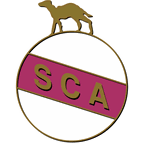 Founded on May 17, 1908, the beginnings of the Sporting Club Anderlecht take place in the shadow of the many Brussels clubs already
existing since the 19th century, namely the Léopold Club, Sporting de Bruxelles, Union FC Ixelles, Skill FC, Athletic & Running Brussels,
the Olympia Club, Uccle Sport, the Excelsior SC, but especially the Daring, the Racing Club and Union Saint-Gilloise. These latter clubs
have already won several national titles.
Founded on May 17, 1908, the beginnings of the Sporting Club Anderlecht take place in the shadow of the many Brussels clubs already
existing since the 19th century, namely the Léopold Club, Sporting de Bruxelles, Union FC Ixelles, Skill FC, Athletic & Running Brussels,
the Olympia Club, Uccle Sport, the Excelsior SC, but especially the Daring, the Racing Club and Union Saint-Gilloise. These latter clubs
have already won several national titles.
Evolving since its foundation on a ground at Verheydenstraat, the club has settled permanently on a piece of ground made available by
the municipality of Anderlecht in 1914.
This ground is located on the edge of a large park opened in 1903. Inaugurated under the name of Meerpark, it has been redeveloped and
enlarged over time, but especially in 1926 by the architect Jules Buyssens.
As for the stadium, a first wooden stand was built in 1920. At that time, the facilities were greatly reduced, but that was not a
problem. Indeed, Sporting is far from being a stable club and its first years were synonymous with many ascents and descents, the club
being also nicknamed at that time "the lift".
In 1935, following the death of Queen Astrid of Belgium, the park was renamed to Astridpark, in tribute to the beloved queen from Sweden.
The same year, the Purples & White club acquired a certain stability and was once again promoted in Division 1, to stay there definitively
this time.
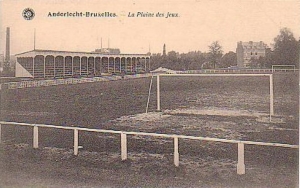
Rise in power during the inter-war period
If the title of champion was won only four times outside Brussels between 1896 and 1914 (FC Liège in 1896, 1898 and 1899, and the
Cercle Bruges in 1911), after the Great War, the situation changed little by little.
As soon as the official competitions return, the domination of the Flemish clubs had become stronger and stronger. Thus, in 1920,
FC Bruges won the title. Then it’s the turn of the Antwerp clubs (Beerschot AC, Antwerp and Lierse) to take the 1st place in the
championship. Meanwhile, the Daring and the Union continue to glean a few titles, but the Brussels' domination has ended. Worse,
several clubs in the capital were dissolved or fell into the lower divisions.
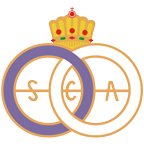 The place of leader of Brussels football is to be taken and the Sporting Anderlecht has gradually increase in power.
The place of leader of Brussels football is to be taken and the Sporting Anderlecht has gradually increase in power.
In 1935, the club signed a 30-year long lease with the municipality of Anderlecht covering an area of 4 hectares. At that time the club
already occupied almost a third of the total area of Astridpark. Meanwhile, the stadium is named after Emile Versé, the club's sponsor.
Little by little, the stadium is developing and concrete stands begin to surround the ground.
In 1946, the club obtained the right to carry out major works from the municipality.
It must be said that Sporting is becoming a popular club and that these facilities are starting to be too cramped. The stands are
raised and a daring seating stand is built. This stand is sheltered by a cantilevered roof, something unusual for the time.
The following year, the club celebrated its first national title. The dominance of Sporting over Belgian and European football is
just beginning.
After the war, only Anderlecht managed to honor the capital with the title of champion, the Daring and the Union having fallen into
anonymity. These two clubs will no longer regain their glory and the Daring will even have to merge with the White Star in the 70's
to avoid completely disappearing. This merger will still bring a champion title in 1975 but the rest was only a succession of problems
and the prestigious club of Molenbeek will disappear in 2002.
As for Sporting, and after its inaugural title, the highest step of the podium has been occupied by the Purples & Whites in 1949,
1950, 1951, 1954, 1955, 1956 and 1959.
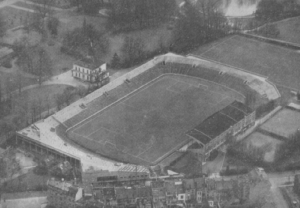
Two decades at the top of Belgian and European football
The 1960's were marked by an outrageous domination of Sporting. Indeed, during this decade, the title has escaped Anderlecht
only four times : Lierse (1960) and Standard (1961, 1963 and 1969). The first Belgian Cup was won in 1965.
The stadium will be further enlarged during this golden age and an "Elascon" type stand has been built behind a goal around 1965.
The stadium's capacity is then 40,000 places.
The "Elascon" tribunes have been built in large quantities in the Netherlands but only have had limited success in Belgium. With
the exception of Anderlecht, we only had the following stadiums in the upper leagues : Florent Beekman (Denderleeuw), Fallon (Woluwé),
Vedette (Boussu) and Pairay (Seraing). This type of construction is about to disappear completely. It must be said that the structures
of these stands are particularly light and don't have the solidity of concrete.
The last two uncovered terraces have been sheltered in the process.
In 1972, the European Nations Championship stopped in Belgium and a match was organized at the Emile Verséstadion : USSR-Hungary (1-0)
with only 2,000 spectators.
Omnisports club, the Sporting invests in the construction of the Henri Simonet Hall between 1969 and 1972.
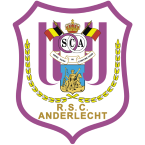 From a sporting point of view, the supremacy of Anderlecht over the Belgian championship experienced a certain drop in speed : the
title has been won only in 1972 and 1974. On the other hand, the Belgian Cup was won four times (1972, 1973, 1975 and 1976).
From a sporting point of view, the supremacy of Anderlecht over the Belgian championship experienced a certain drop in speed : the
title has been won only in 1972 and 1974. On the other hand, the Belgian Cup was won four times (1972, 1973, 1975 and 1976).
But at the continental level, Sporting has become a club feared and respected by the other European clubs. So after a lost final
against Arsenal in the Fair Cities Cup in 1970, Anderlecht won two Cup Winners' Cups (EC2) in 1976 and 1978 and two UEFA Super Cups
in the same years. The Sporting has thus dominated prestigious clubs such as Bayern Munich, Liverpool and West Ham (and to a lesser
extent the Austria Vienna).
For big European matches, Anderlecht has still been forced to play at the much larger Heysel Stadium.
During these 20 glorious years, the best football artists have been set foot on the lawn of the Astridpark. The Belgian internationals
(among others Paul Van Himst, Ludo Coeck, Jef Jurion, Wilfried Puis, Martin Lippens and Jacques Stockman), Dutch (Jan Mulder, Arie Haan
and Robbie Rensenbrink) and Hungarian (Attila Ladinsky) will enchant the faithful for many years Anderlecht's public.
Sporting is then renowned for its very technical but also organized game. Major international coaches have also officiated at
Théo Verbeecklaan. These include Norberto Höfling, Pierre Sinibaldi, Georg Kessler, Urbain Braems, Hans Croon, Raymond Goethals and Tomislav Ivić.
The 1970's also saw the arrival of a man who would make an indelible mark on the club and the Sporting stadium : Constant Vanden Stock.
Director of the Belle-Vue brewery, former player of D1 and Red Devil, then trainer and national coach, he became president in 1971.
Aware that a stadium can bring in more money than mainly from supporters’ takes, he imagines a revolutionary stadium which will be
cited as an example around the world. The moulting of the old Emile Verséstadion can begin.
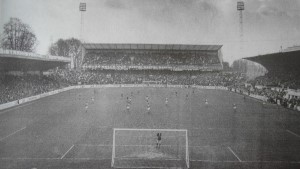
From a football stadium to a theater, a symbol of business-football
Constant Vanden Stock therefore imagines new means to increase the budget and thus permanently register the club at the top of
European football.
At this time, money from TV still represents only a tiny part of the club's revenues and the majority of the budget is generated by
a substantial attendance at the matches of Purples & Whites. But rather than betting on an increase in the number of supporters,
Vanden Stock prefers to favor a clearly more profitable clientele : the businessmen. They welcome the possibility of negotiating
lucrative contracts while having the opportunity to attend a football match. This is how business-seats and skyboxes are created.
For its new stadium, Vanden Stock will put it everywhere. Note that for the first time, the stadium design is designed by computer.
The new stadium bears the name of its president : Constant Vanden Stockstadion.
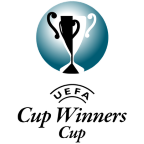 The first works began in 1983 and the old seated main stand was replaced by a new unique construction : two floors of seating with
in between, a floor of 24 skyboxes rented year-round at golden prices. In 1986, opposite the main stand, a similar structure (but with
600 business-seats in place of skyboxes) was built.
The first works began in 1983 and the old seated main stand was replaced by a new unique construction : two floors of seating with
in between, a floor of 24 skyboxes rented year-round at golden prices. In 1986, opposite the main stand, a similar structure (but with
600 business-seats in place of skyboxes) was built.
In 1988, the “Elascon” stand disappeared in favor of 8 skyboxes, 550 business-seats and seating and standing places.
Finally, in 1991, the stands formerly occupied by the Sporting kop were razed and replaced by a new stand equipped with 400 business-seats
and a tower lined with 7 skyboxes was erected along Théo Verbeecklaan.
The new capacity is just over 28,000 places, including more than 2,000 places in luxury places. Cash inflows will be multiplied.
At that moment, we tell that Vanden Stock had an idea of genius. But...
From a sporting point of view, the 1980's still saw a certain domination of Sporting on the European scene. But Anderlecht is no
longer the only Belgian club to shine. If FC Bruges had already reached the final of the EC3 in 1976 and of the Champions Club Cup
(EC1) in 1978 each time against Liverpool, it is now the turn of Standard (lost final of the CE2 in 1982 against FC Barcelona) but
especially the turn of FC Mechelen to win in Europe. The Mechelen club won the EC2 in 1988 against Ajax Amsterdam (1-0). Anderlecht
nevertheless won the CE3 in 1983 against the Benfica Lisbon (2-1).
On the domestic scene, the club was sacred in 1981, 1985, 1986 and 1987 and won the Belgian Cup in 1988 and 1989.
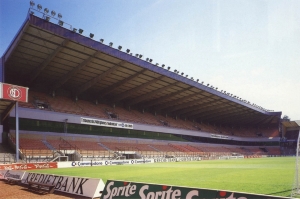
Exploding TV broadcast costs and a stadium too small
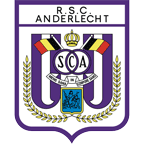 Vanden Stock's calculations did not anticipate the explosion of television broadcast costs. These will favor from the 1990's the large
countries to the detriment of the smallest. Indeed, the more a country is populated, the more there are potential spectators and
the higher the costs there.
Vanden Stock's calculations did not anticipate the explosion of television broadcast costs. These will favor from the 1990's the large
countries to the detriment of the smallest. Indeed, the more a country is populated, the more there are potential spectators and
the higher the costs there.
Belgium, with its 10 million inhabitants, is not able to compete. The Bosman ruling also dealt a fatal blow to Belgian clubs. Anderlecht played their last
European final against the Sampdoria Genoa in 1990 (EC2, 2-0 defeat).
Antwerp FC still managed to play a European final in 1993 (EC2 against Parma AC, 3-1 defeat) but it would be the last final played by
a Belgian club. The results of Anderlecht obviously follow the same slope and the prestigious Brussels club has even became the
laughingstock of European football by posting a dismal 0 out of 18 during its participation in the Champions League in 2004-2005.
A few blows of radiance are all the same listed but Anderlecht (and Belgian football in general) is no longer scary. On the contrary...
For the stadium, the tightening of UEFA’s security rules has lowered the seating capacity to just 21,000 seats for European matches. Euro 2000 hasn't stop at Astridpark.
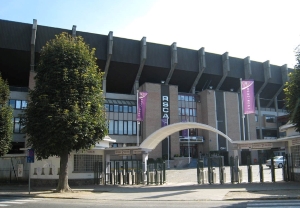
Projects remaining unfulfilled
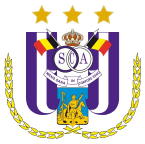 For the presidency of the club, Constant gave way to his son Roger in 1996, after 25 years of service.
For the presidency of the club, Constant gave way to his son Roger in 1996, after 25 years of service.
The end of Constant’s reign has been marked by scandal : the
Anderlecht-Nottingham Forest affair.
Anderlecht finds itself in the mid-2000's facing a dilemma : either the stadium is slightly enlarged (its location in the city doesn't
favor a very ambitious project), or the club moves out of Anderlecht and permanently loses its identity.
Some renovations are still underway, namely the replacement of the lighting (2006) and the seats (2012), as well as the refurbishment
of the stands. These works further reduce the capacity to 26,000 places.
Anderlecht continues to trump the first prizes but its dominance on Belgian football is undermined by FC Bruges, Standard, AA Gent
and RC Genk. Thus, between 1990 and 2016, only eight championships were won by the Purples & Whites (1990, 1992, 1996, 2003, 2005, 2008,
2009 and 2016). As for the Belgian Cup, it’s even worse since during the same period, only two trophies were won (1994 and 2008).
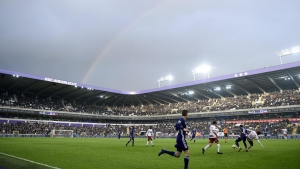
The end of the Vanden Stock era
In 2018, the unimaginable arrived : Roger Vanden Stock puts the club of his heart on sale. Several candidates arrived and it's finally the billionaire (and incidentally president of the KV Oostend) Marc Coucke who wins the presidency. The Vanden Stock era lasted 46 years and has an impressive track record : 20 championship titles, 8 Belgian Cups, 13 Belgian Super Cups, 2 Cup Winners' Cups, 1 UEFA Cup and 2 European Super Cups.
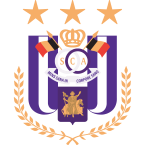 With the hope of renewal (especially in the European Cups), the club begins the 2018-2019 season with lots of optimism and a number
of transfers. Alas, the club achieves the unenviable feat of making the worst result since the 1972-1973 season and even worse, doesn't
even manage to qualify for Europe. A sad first in 55 years of uninterrupted presence in continental competitions.
With the hope of renewal (especially in the European Cups), the club begins the 2018-2019 season with lots of optimism and a number
of transfers. Alas, the club achieves the unenviable feat of making the worst result since the 1972-1973 season and even worse, doesn't
even manage to qualify for Europe. A sad first in 55 years of uninterrupted presence in continental competitions.
Meanwhile, the club yields to the stupid fashion of naming and against a lucrative contract, the stadium is now called Lotto Park.
With a simple signature, the Vanden Stock legacy is forgotten.
What will happen to the venerable stadium ? Will the club one day be able to regain its prestige ?
Nothing is less sure...
Pictures
Astridpark
The Emile Verséstadion at its beginnings. A wooden stand and that's it.
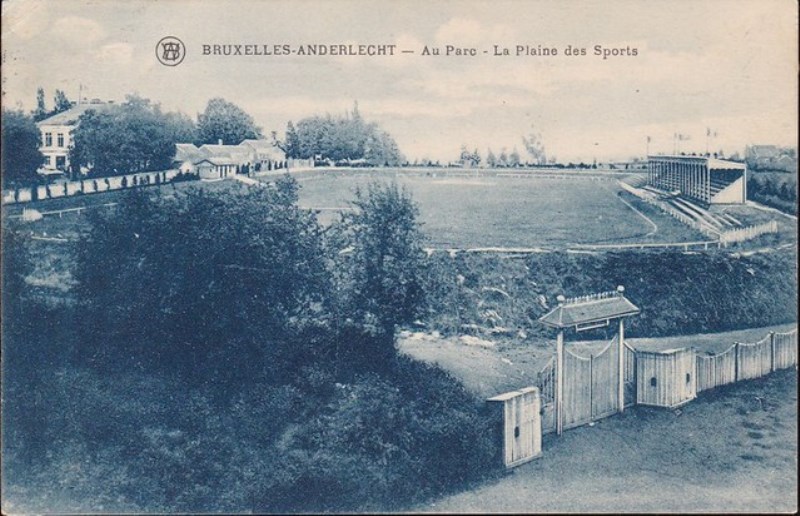
Astridpark
The small stadium seen from the future Avenue Théo Verbeecklaan.
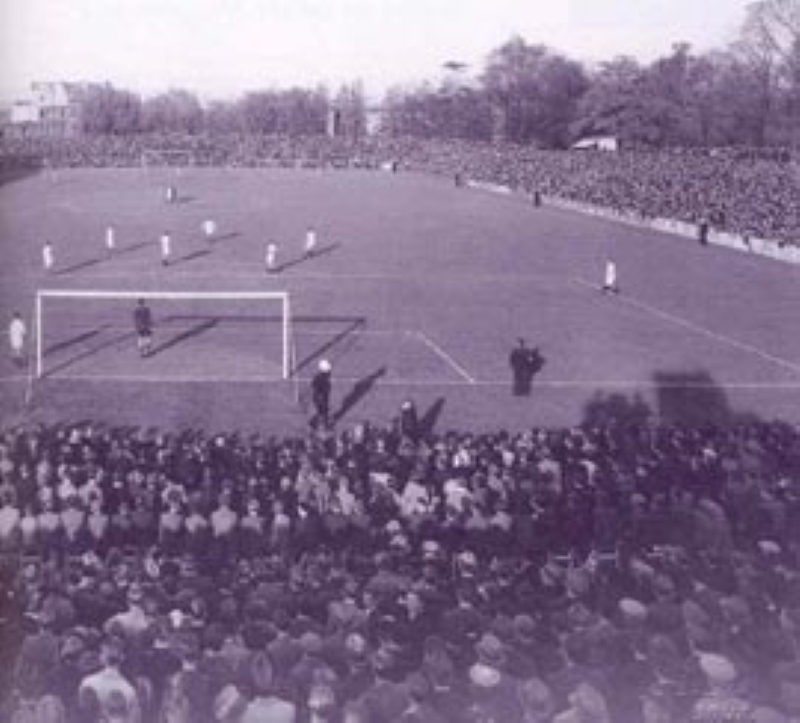
Astridpark
Around 1935, concrete terraces surround the grounds.
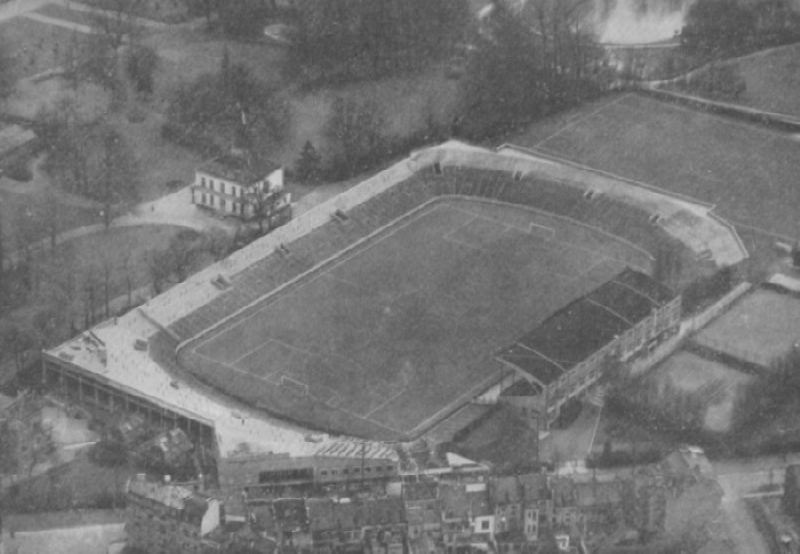
Astridpark
Aerial view in 1946. The stands are enlarged while a new seated stand is erected. The club can celebrate its first title in a renovated stadium.
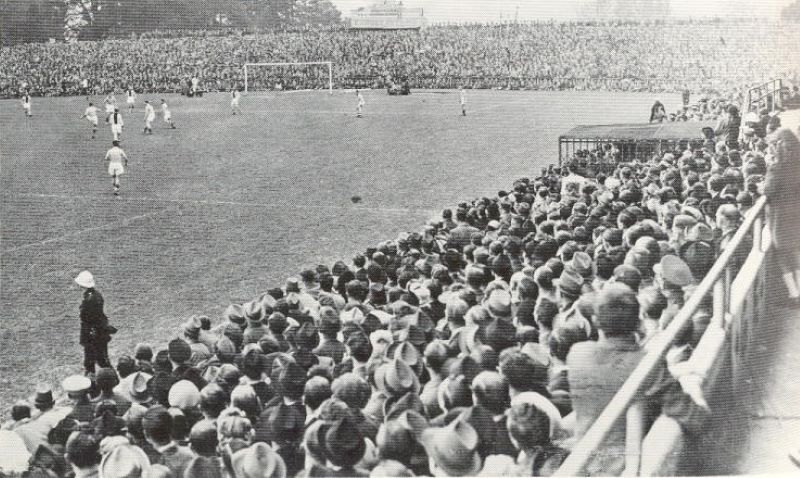
Astridpark
With the help of success, the spans of Astrid Park were regularly crowded in the 1950's.
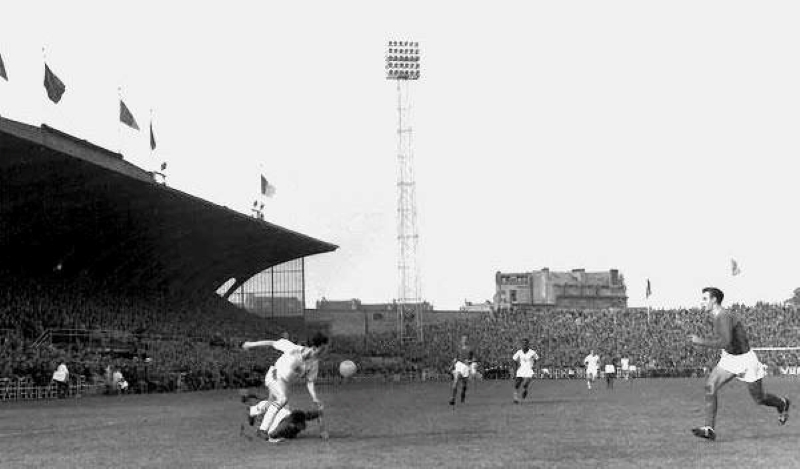
Astridpark
The stadium in 1959. The main stand was extended the entire length of the ground while artificial lighting appeared.
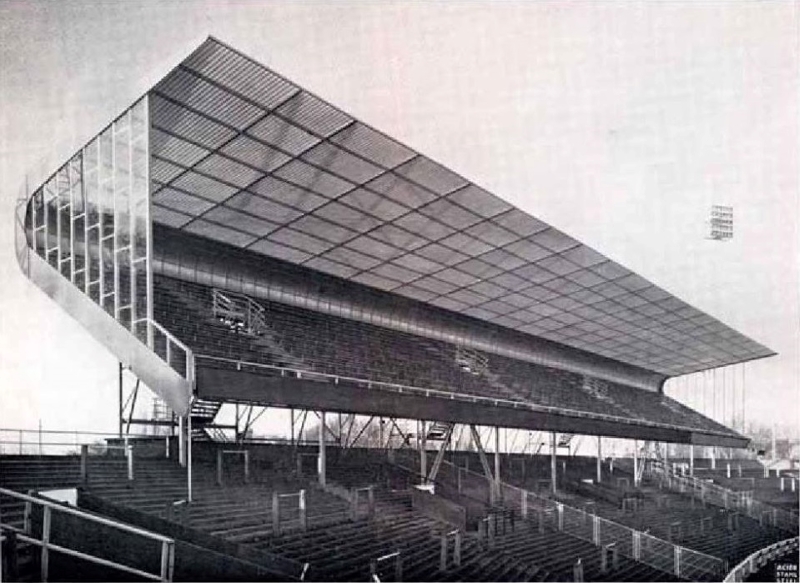
Astridpark
The “Elascon” stand in 1966. This daring construction will increase the capacity of the stadium to 40,000 places.
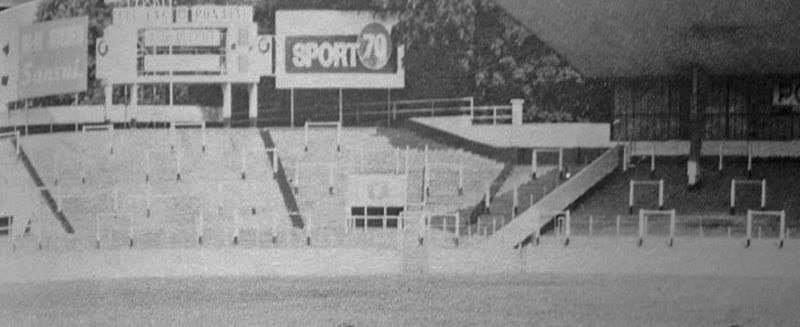
Astridpark
Gradually, all the stands will be equipped with a roof. Euro 72 has been organized in this configuration.
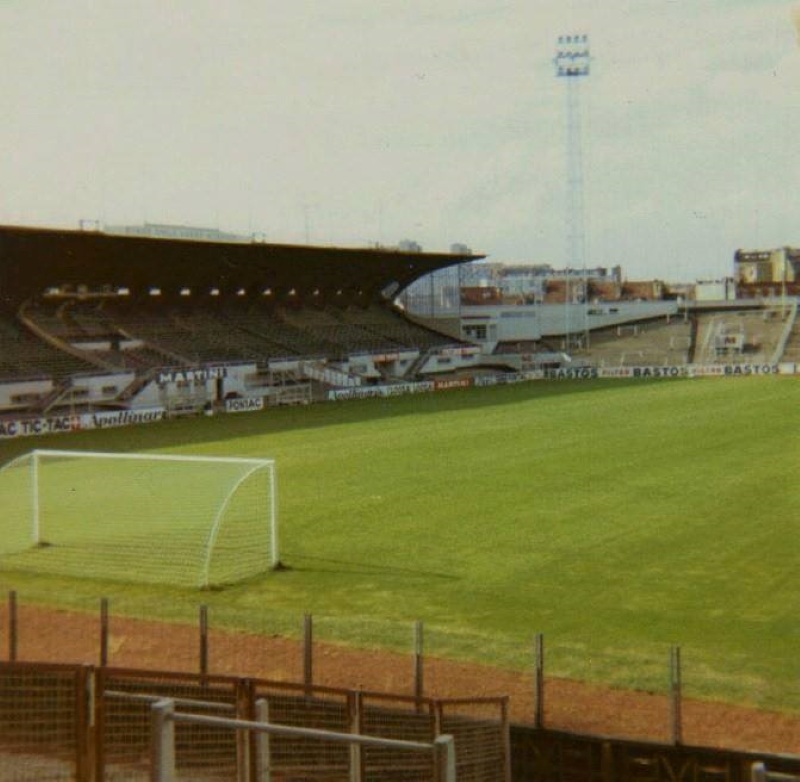
Astridpark
A dilapidated stadium unworthy of a European tenor. This is what Constant Vanden Stock thinks in the late 1970's.
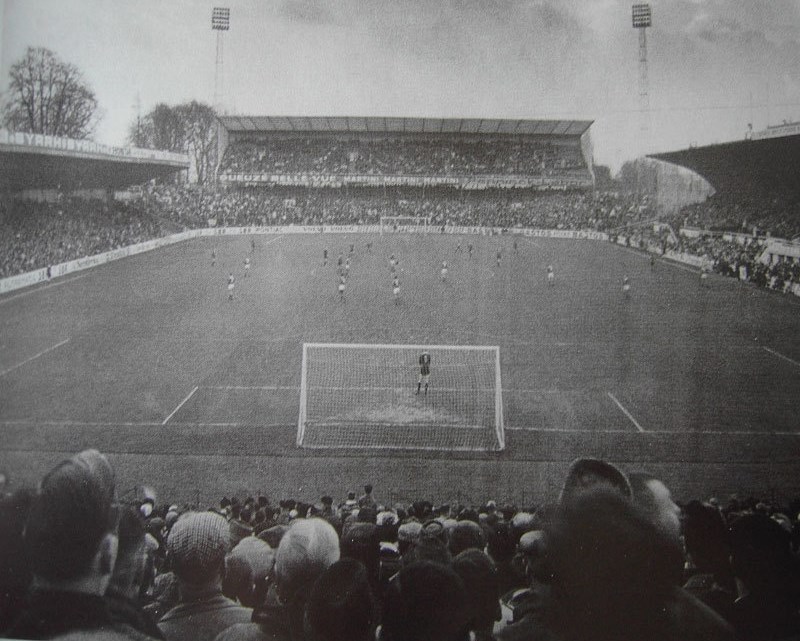
Astridpark
The old Emile Verséstadion at the dawn of the 80's. A radical transformation will soon take place.
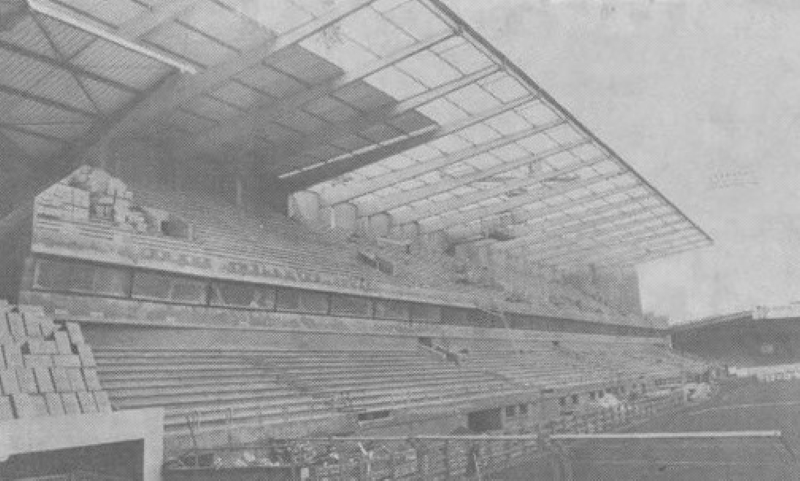
Astridpark
1983 : start of major works. The new stand 1 under construction.
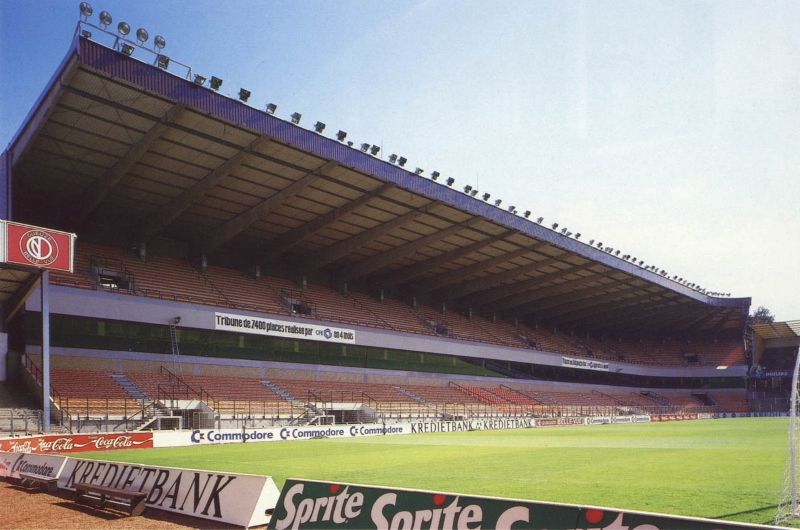
Astridpark
In 1986, the terrace on the park side was destroyed and replaced by a new stand with 7,400 seats.
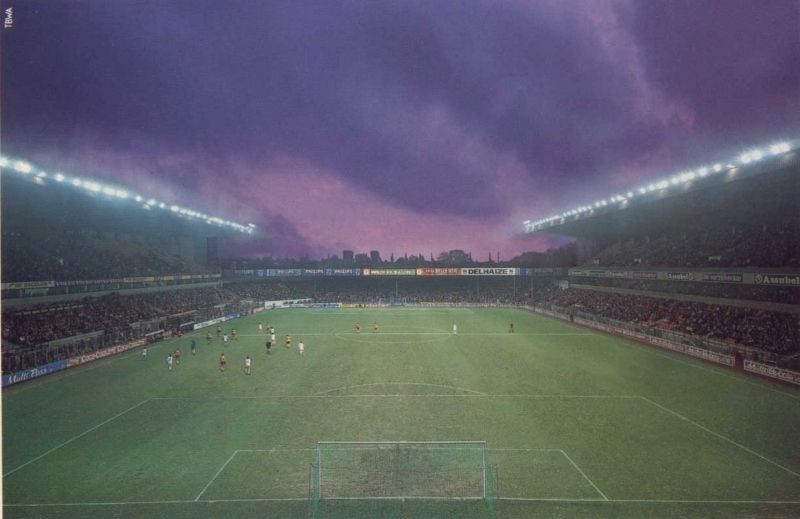
Astridpark
For two years, the two end stands are still original.
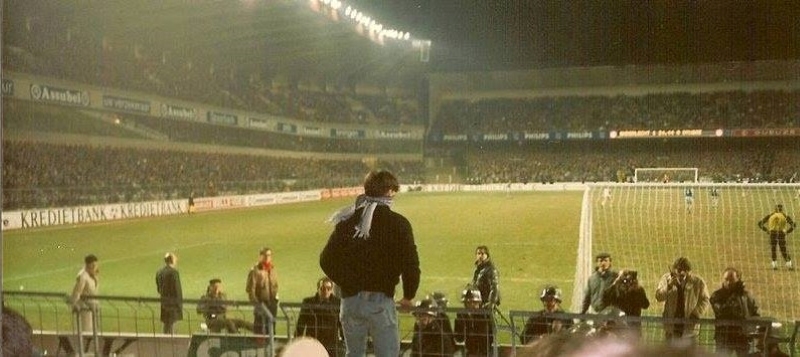
Astridpark
Like everywhere, hooliganism is present in the Astridpark. Here, the O-Side is particularly feared.
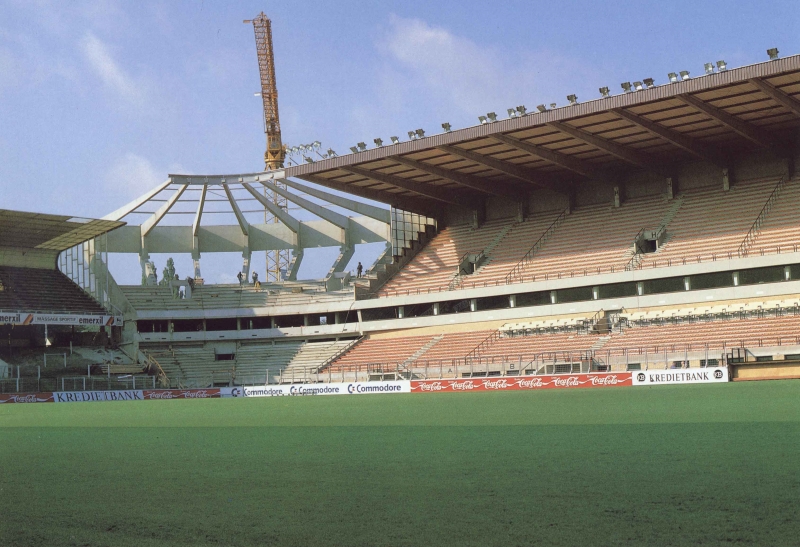
Astridpark
Junction between the new main stand and the old “Elascon” stand.
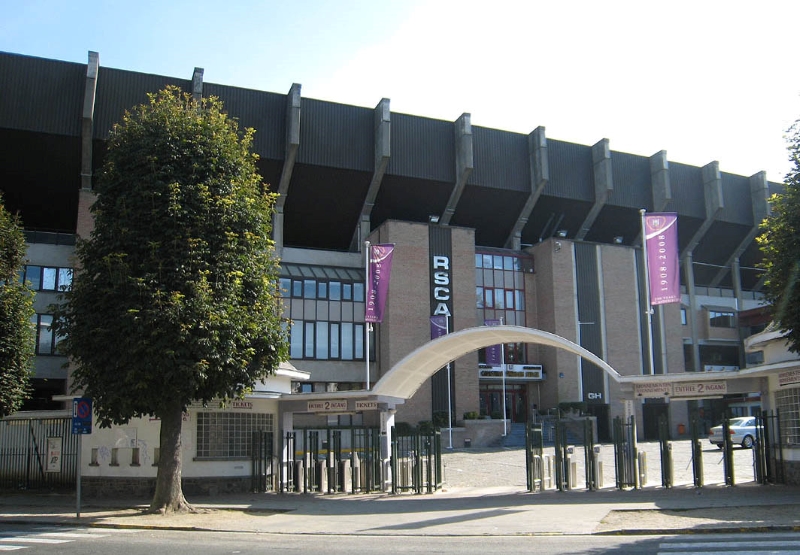
Astridpark
The beautiful facade typical of the 80's. The stadium received the first prize for architecture and sport awarded by the International Olympic Committee. The portal dates from the 1950's.
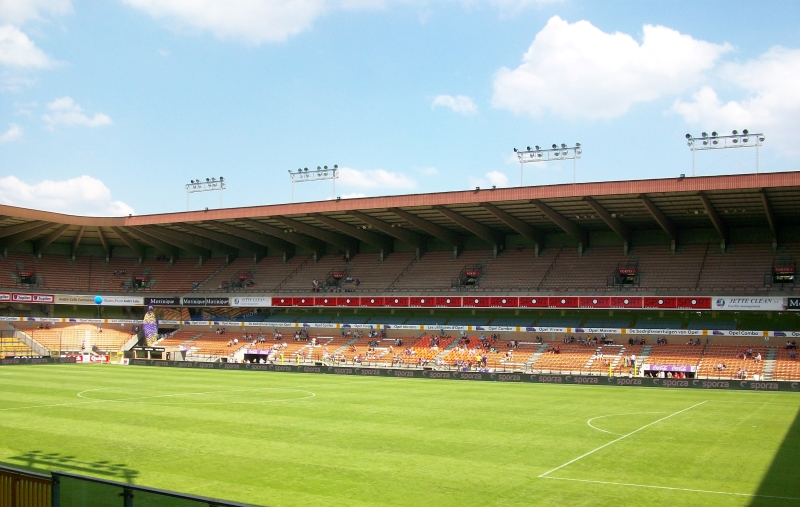
Astridpark
All seats are orange. Why ? Otherwise, the spectator's safety and comfort, as well as his good vision of the ground, were important factors in the design of the stadium.
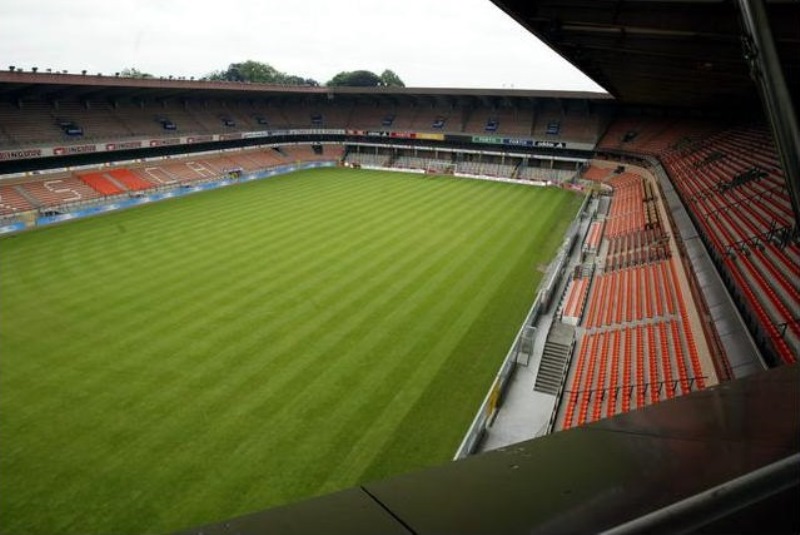
Astridpark
A model stadium for the most successful club in Belgium.
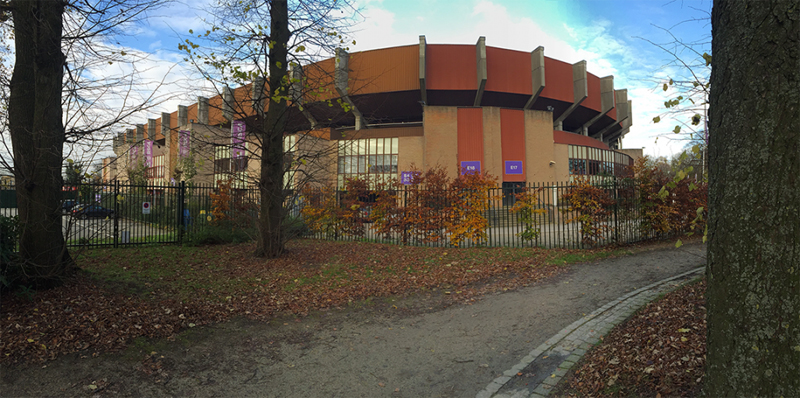
Astridpark
Due to its presence in a park on one side and a large urban density on the other, the Constant Vanden Stockstadion cannot be extended endlessly.
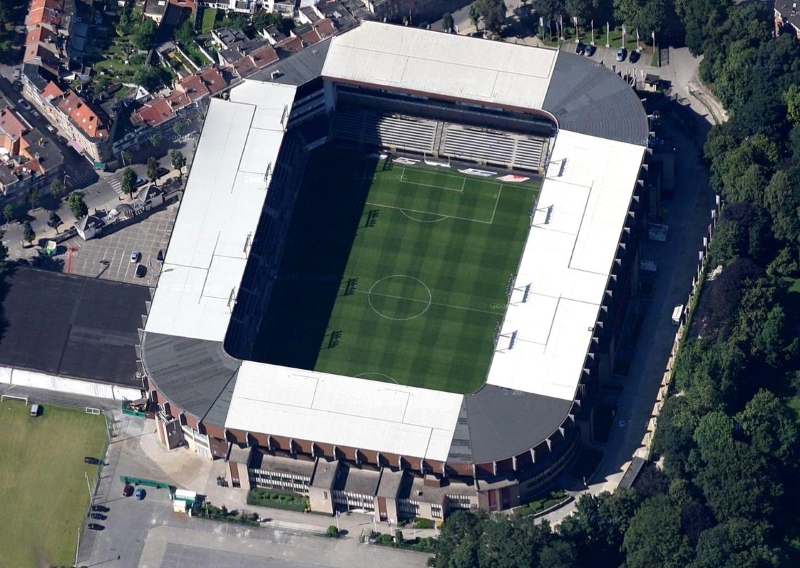
Astridpark
The Simonet Hall is on the left. If the stadium is enlarged, it will disappear.
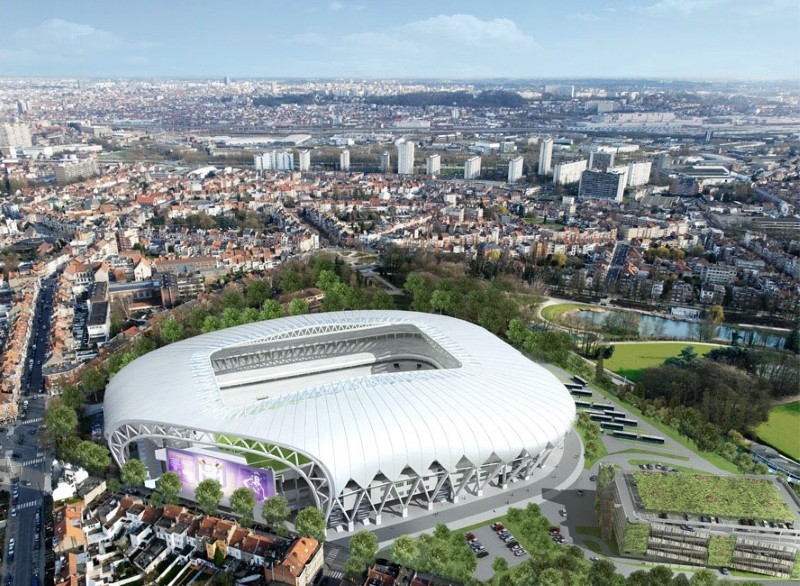
Astridpark
One of the stadium expansion projects : adding a third tier and a capacity between 30,000 and 35,000 seats.
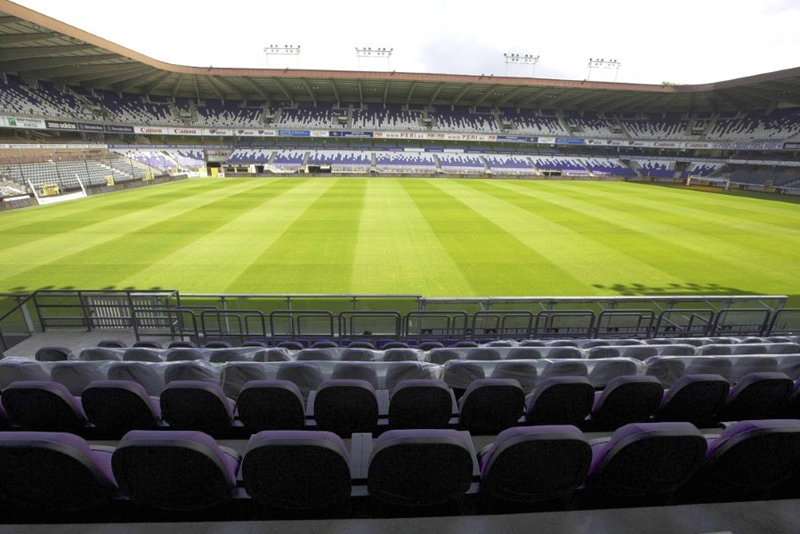
Astridpark
The seats are finally purple and white. The stadium still gains in comfort but loses capacity.
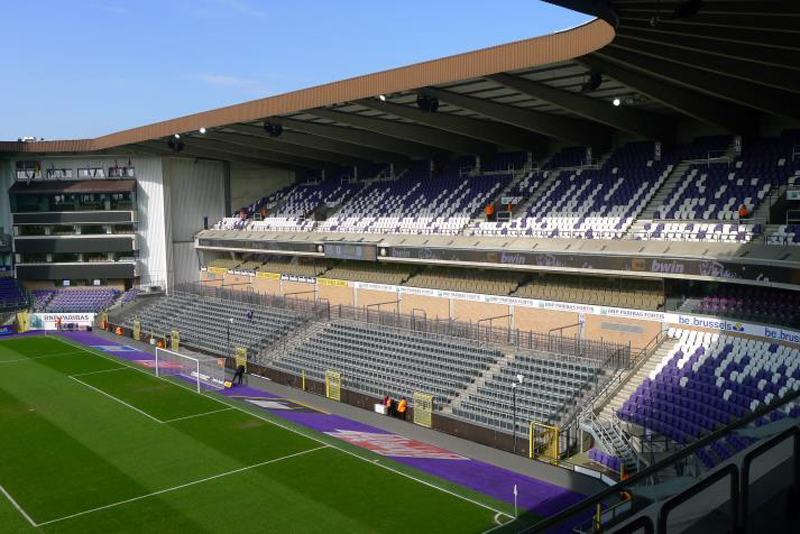
Astridpark
Terrace of the Kop. The most fervent supporters regret the former stadium and its overheated atmosphere.
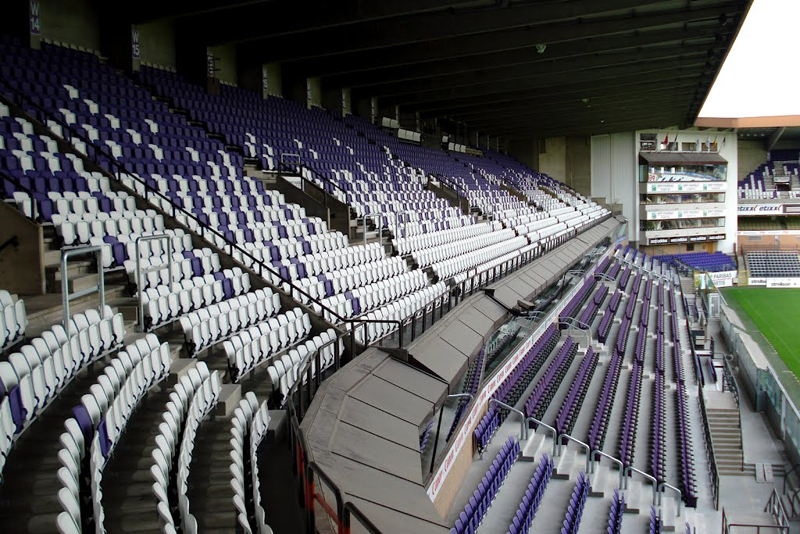
Astridpark
The main stand. Unfortunately, the gentrification of stadiums is rotting the atmosphere throughout Europe.
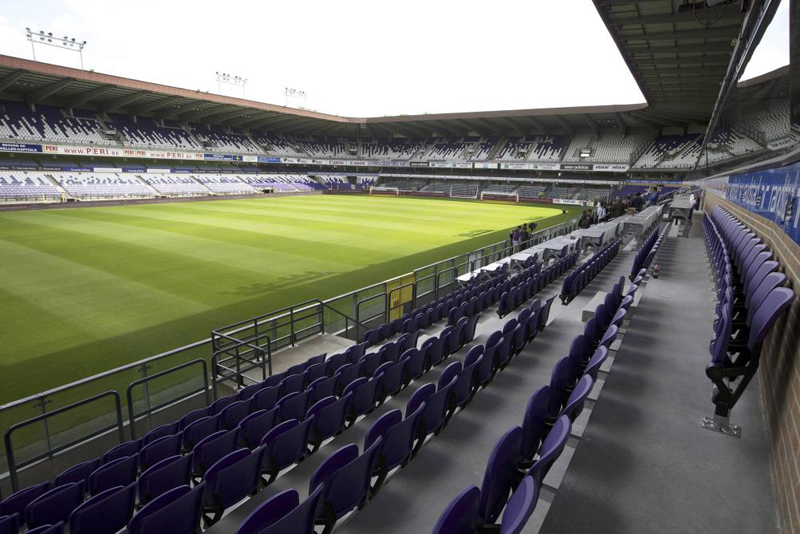
Astridpark
But Anderlecht can claim less to keep its identity and its home.
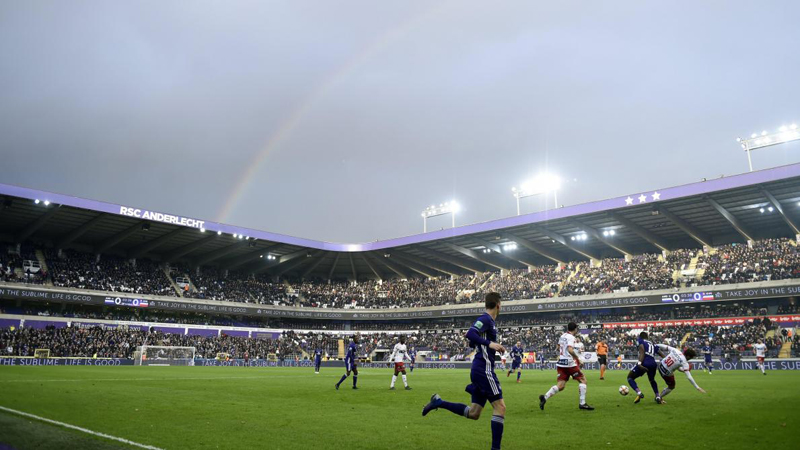
Astridpark
The Astridpark remains a beautiful little stadium despite everything.
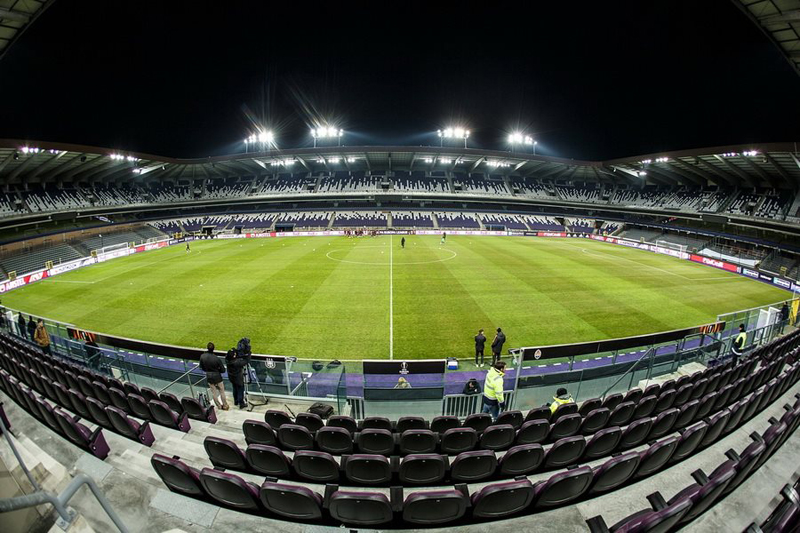
Astridpark
So many victories have taken place here.
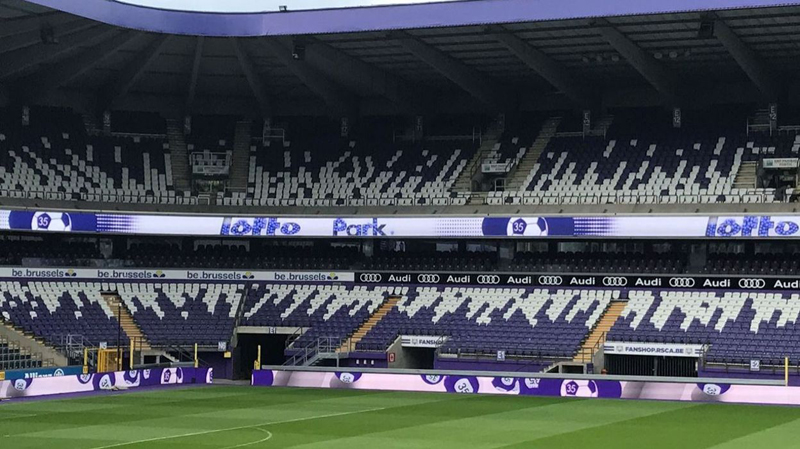
Astridpark
As for its new name, no comment !
Note
-
This article comes from my old website www.foothisto.be but was never published.
It has been somewhat modified and updated recently (February 2020).
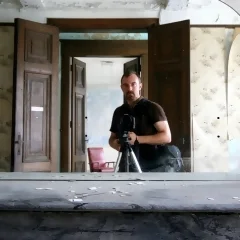
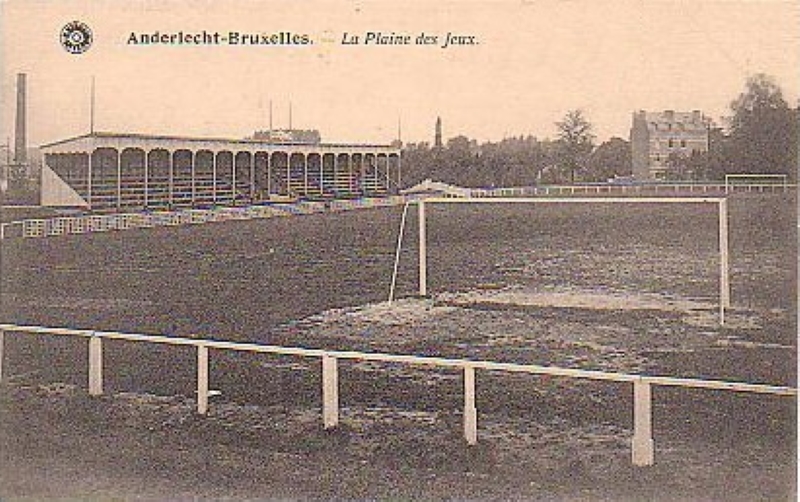
Soyez le premier & devenez quelqu’un de bien • Be the first & become a good person